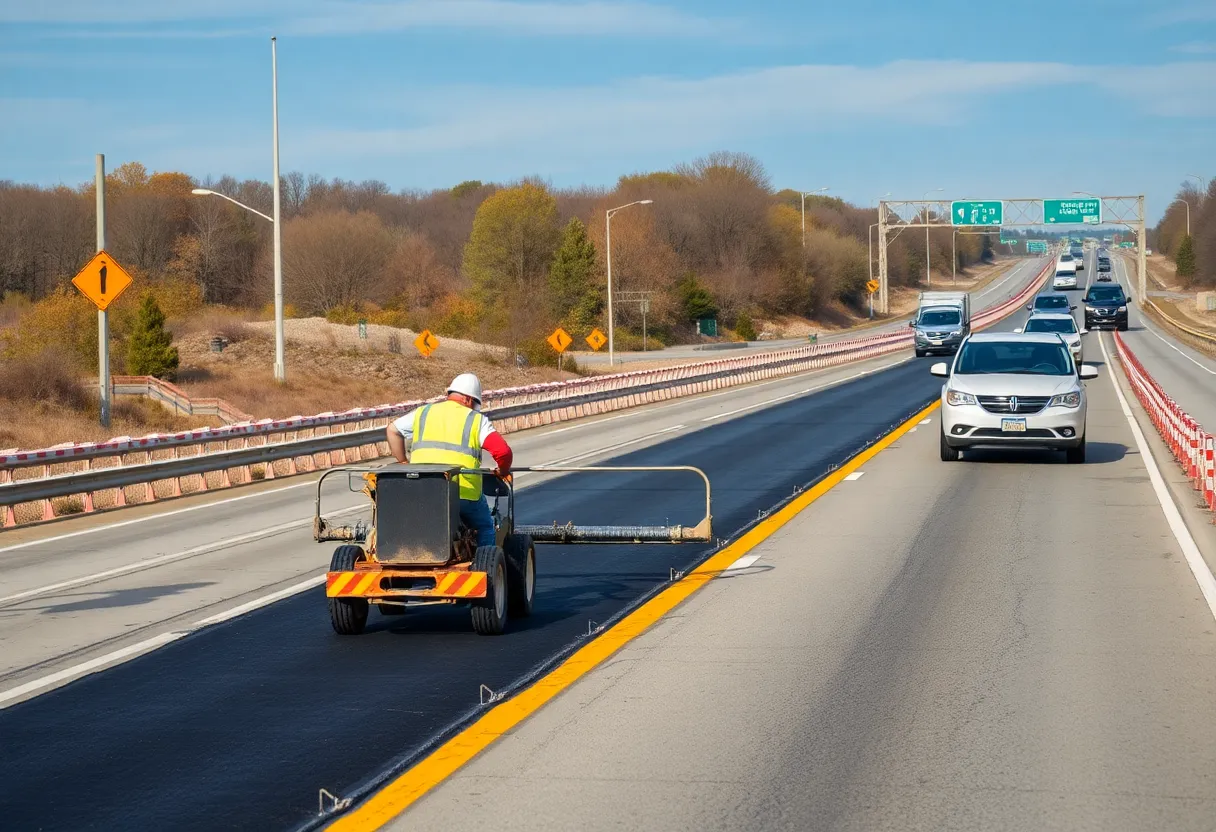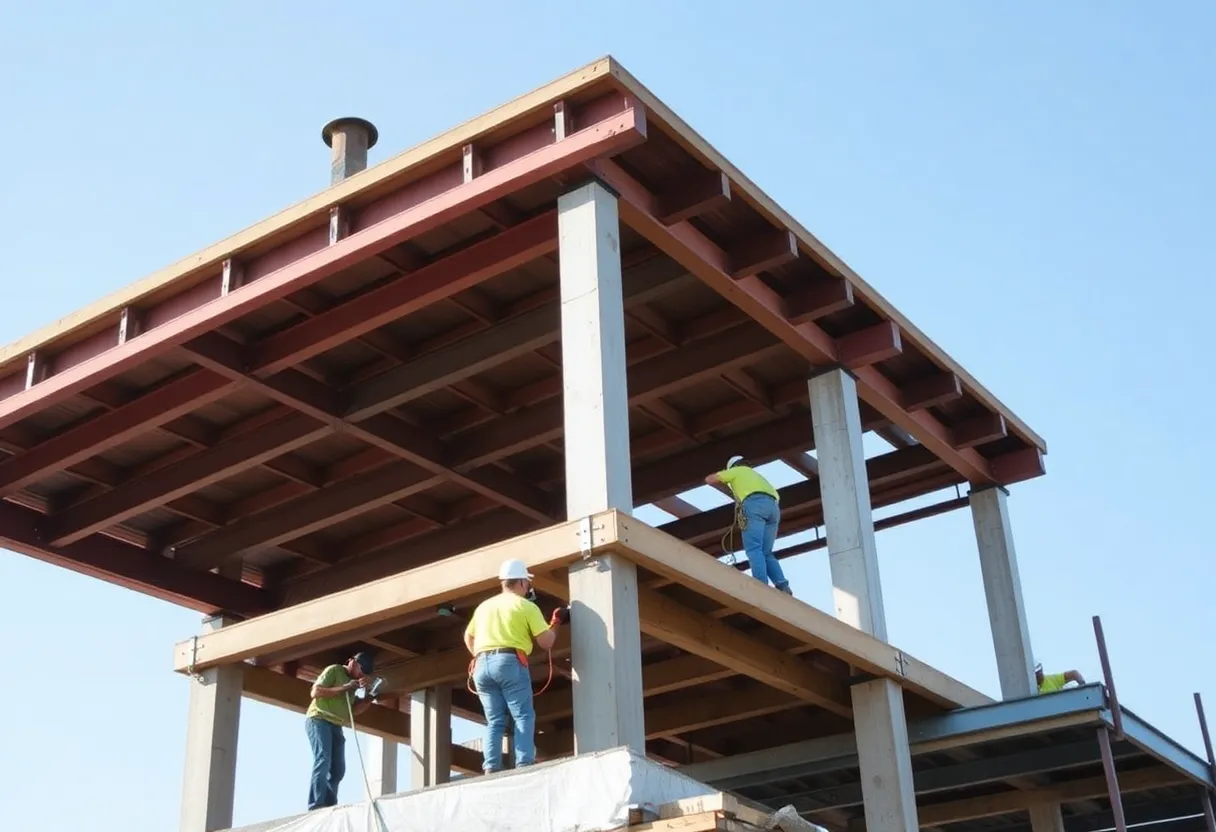News Summary
Canada has achieved a historic high in nonresidential construction starts with a total value of $77.2 billion, reflecting a remarkable 19.8% increase from previous figures. This growth primarily stemmed from five key megaprojects contributing over $30 billion to the total. As the construction industry stabilizes after recent challenges, focus is also shifting towards addressing Canada’s urgent need for new housing, with estimates suggesting up to 4.8 million homes required in the coming years. The ongoing investments signal a promising future for the sector.
Canada Sees Record High in Nonresidential Construction Starts for May 2025
In May 2025, Canada recorded an unprecedented total of $77.2 billion in nonresidential construction starts. This remarkable figure reflects a growth of $12.8 billion, or an impressive 19.8%, when compared to previous data. This marks a significant turnaround in the nation’s construction sector, offering a sign that the economy is gaining momentum after several challenging years.
Positive Growth and Historical Highs
For the first time this year, spending in the nonresidential construction category has shown a positive trend, increasing by 6.9%. Monthly nonresidential starts have reached a record level, indicating the highest volume ever recorded in Canadian history. This is particularly significant for an industry that has experienced fluctuating demands and uncertainties in recent years.
Megaprojects Drive Growth
A staggering contribution comes from five megaprojects, which alone accounted for over $30 billion of May’s total spending. The total spending on megaprojects over a 12-month moving average has now surged to $12.3 billion, showcasing the increasing importance of large-scale projects in the overall construction landscape.
Notably, these megaprojects have spanned various categories, including Transportation Terminals, Power Plants, Power Lines, and Tunnels. ConstructConnect has noted that year-to-date through May, there have been 27 megaprojects valued at $67.9 billion, compared to a mere $8.4 billion average monthly megaproject spending recorded in February. This represents a significant 50% improvement following the post-COVID lows.
Key Contributors and Economic Impact
The majority of the spending in May was driven by the groundbreaking of a new chip plant for the Taiwan Semiconductor Manufacturing Company in Phoenix, Arizona. This megaproject has been instrumental in shifting the manufacturing sector from the bottom five performing categories to one of the top five for the year. In fact, megaprojects accounted for approximately 39% of total nonresidential construction spending in May.
Future Housing Needs in Canada
As the nonresidential sector stabilizes, attention is also being drawn to residential construction needs. The Canada Mortgage and Housing Corporation estimates that Canada will require up to 4.8 million new homes over the coming years to meet demand. This highlights the dual pressure on the construction industry to cater to both residential and nonresidential needs moving forward.
Challenges and Opportunities
The current economic climate is influenced heavily by various factors, including trade relations, inflation, and climate change. To support further growth, investments in First Nations infrastructure have been recognized as essential for economic development and reconciliation efforts. Addressing the existing infrastructure gap in these communities has the potential to unlock significant economic benefits.
As the construction industry continues to gain momentum, there is optimism that the recovery will strengthen not only the nonresidential sector but also address urgent housing issues across Canada. With federal initiatives aimed at supporting builders and ongoing investments in infrastructure, the outlook remains encouraging for the country’s construction sector.
Conclusion
The record high nonresidential construction starts in May 2025 signal a rejuvenated industry emerging from the challenges of the pandemic. With robust investment in megaprojects and increased spending across various sectors, Canada is on track for a more stable economic future.
Deeper Dive: News & Info About This Topic
Additional Resources
- The Globe and Mail: First Nations Infrastructure Investments and Reconciliation
- Construction Dive: Canada Construction Impact from Trump Tariffs
- Ferrovial: Ferrovial Awarded $1.2B in Infrastructure Projects in US and Canada
- Wikipedia: Infrastructure
- Encyclopedia Britannica: Construction
Author: Construction FL News
The FLORIDA STAFF WRITER represents the experienced team at constructionflnews.com, your go-to source for actionable local news and information in Florida and beyond. Specializing in "news you can use," we cover essential topics like product reviews for personal and business needs, local business directories, politics, real estate trends, neighborhood insights, and state news affecting the area—with deep expertise drawn from years of dedicated reporting and strong community input, including local press releases and business updates. We deliver top reporting on high-value events such as the Florida Build Expo, major infrastructure projects, and advancements in construction technology showcases. Our coverage extends to key organizations like the Associated Builders and Contractors of Florida and the Florida Home Builders Association, plus leading businesses in construction and legal services that power the local economy such as CMiC Global and Shutts & Bowen LLP. As part of the broader network, including constructioncanews.com, constructionnynews.com, and constructiontxnews.com, we provide comprehensive, credible insights into the dynamic construction landscape across multiple states.





